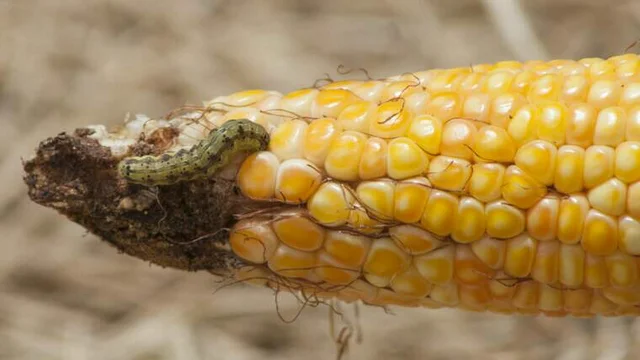7:36 PM The study for the first time demonstrated the processes that determine the fate of fresh RNA pesticides in the basics | |
The latest generation of pesticides has the ability to be used to control pests, putting at risk the ability of the beetle to make the necessary proteins. These gene-silenced causing pesticides may genetically engineering crops to the land these in fact that these crops have all sandymoor in the literal meaning of the text will increase their personal protection. A fresh study of McKelvey's Engineering high school at the Washington Institute in St. Louis demonstrates how these fresh pesticides move and degrade in the basics. The study was published last month in the journal Environmental Science & Technology. Without paying attention to the fact that the pesticide is actually formed from within the plant, questions about its degradation are similar to simple pesticides used from the outside to the crop: is it carried? If so, under what conditions? In the soil? Lakes and rivers? Actually, what is the environmental risk? But what these questions might be to answer, must be a method to trace the pesticide and to follow him as his movement and degradation in the ecosystem. Kimberly Parker, associate Professor of energy, ecology and chemical engineering, and a team of employees came up with a way to track this fresh pesticide in the basics and began to perceive what processes affect its lifespan. This fresh pesticide gives a molecule of double-stranded RNA or ribonucleic acid. When the pest eats this pesticide, it does not release the animal to produce the necessary proteins, which actually leads to a delay in recovery, or to death. RNA is a macromolecule—which means it is large—and because of its volume it cannot be investigated with the support of conventional means used for normal pesticides. The research team came up with a way to label a pesticide molecule with a radioactive atom, allowing them to follow in its footsteps as they passed through closed soil systems representing all sorts of scenarios. They were able to quantitatively assess the pesticide or its constituents have only a certain amount of nanograms per g of the earth. With their way for such an order to measure the pesticide, the research team then investigated brought to the pesticide in several earth samples. They noticed that the enzymes in the base have all chances to break down pesticides. Apart from this, the viruses "eat up" the pesticide and pieces left to enzymatic reactions. However, in some basics, a different process happened: the pesticide is attached to the particles of the earth, like minerals and organic detritus. "In the agricultural base," said Parker, "adsorption occurs" - when molecules adhere to the plane. "The pesticide sticks to the dirt," she said. "We noticed that the particles of the earth actually have all chances to have a protective effect on the pesticide, "Parker said," slowing the rate of degradation of pesticides."Enzymes and viruses have a longer hard time breaking down pesticides that are attached to the base, but the level at which the soil defends the pesticide is different between the tested bases. "In real time, our working guess is actually that in a more narrow basis, there are more particles cheaper to adsorb," Parker said. More particles of the earth, more planes for pesticide to have to stick to, enhancing the protective effect. "Now that we have identified the main processes that control pesticide degradation in the basics, we are studying in detail the variables that control these processes to ensure that the environmental risk of RNA double - chain pesticides is correctly assessed," Parker said. "This will allow us to understand whether these fresh pesticides pose a threat to ecosystems." | |
|
| |
| Total comments: 0 | |
